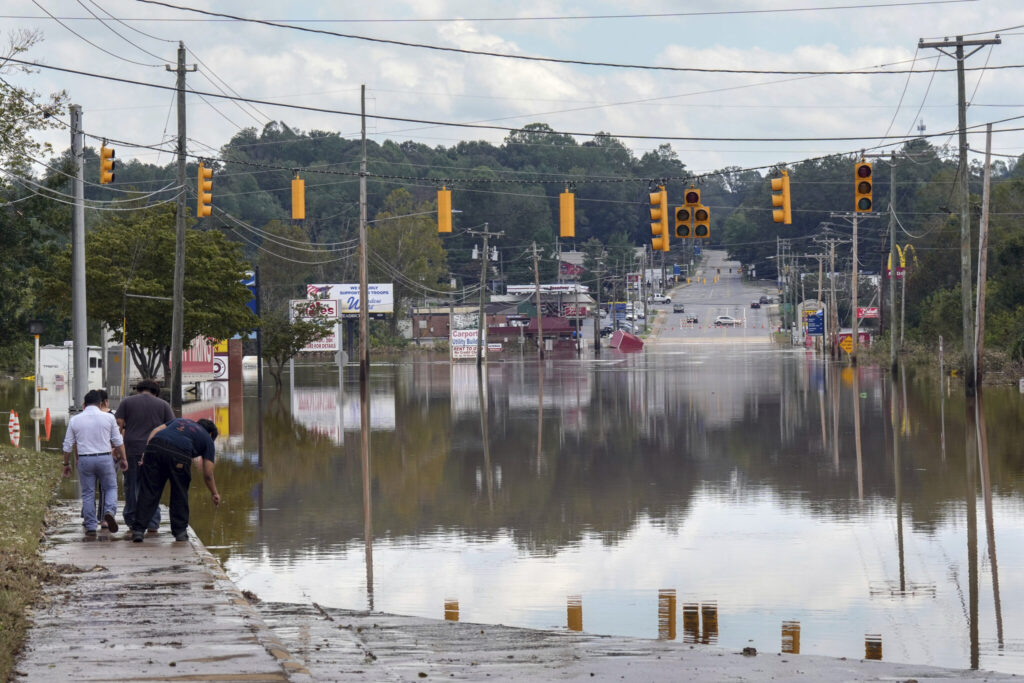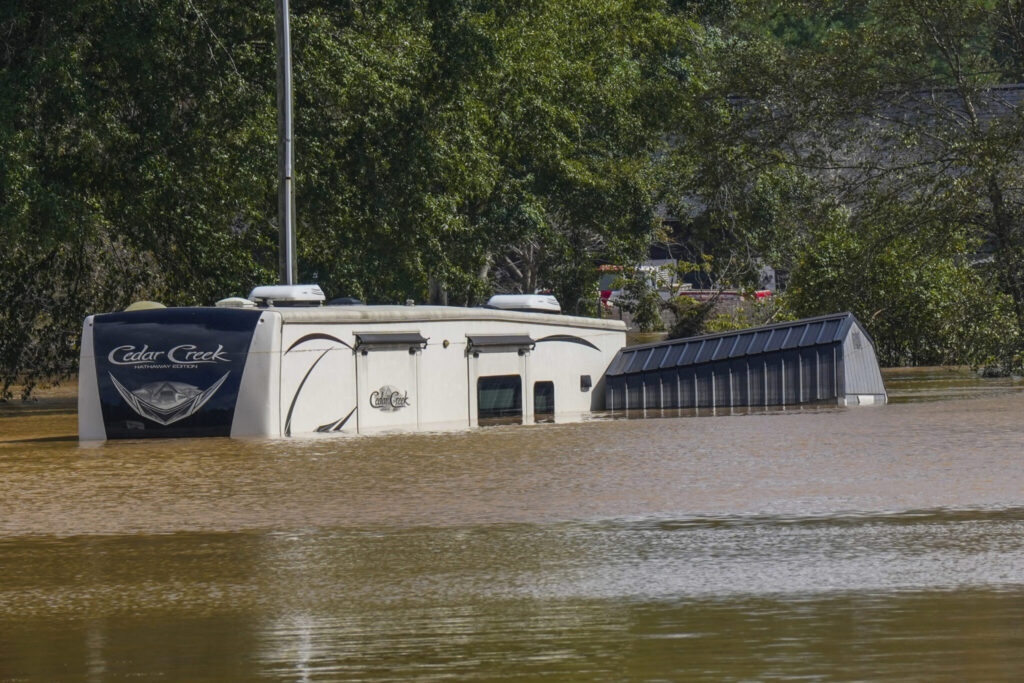Helene relief efforts/ storm death toll rises/ supplies reach isolated communities/ Helene storm aftermath/ Newslooks/ PERRY/ FLORIDA/ J. Mansour/ Morning Edition/ Hurricane Helene left nearly 102 dead across the U.S. Southeast, with communities like Asheville, NC, cut off by floods and power outages. Authorities are rushing food and water to isolated areas. President Biden has pledged federal support and plans to visit impacted regions this week. Recovery efforts continue as rescuers reach stranded individuals, and power remains out for millions.

Helene’s Devastation: Death Toll Tops 100, Supplies Airlifted to Isolated Areas – Quick Looks
- Death Toll Climbs: Nearly 102 confirmed deaths across several states, with North Carolina’s Asheville suffering severely.
- Emergency Supplies Rushed: Isolated communities in North Carolina are receiving food and water via airlift.
- Federal Assistance: President Biden pledged ongoing federal support and plans to visit affected areas.
- Mass Power Outages: Over 2 million homes and businesses remain without power across the Southeast.
- Search and Rescue: Hundreds of water rescues are underway, with major efforts in Tennessee and North Carolina.
Helene’s Death Toll Tops 100 as Supplies Reach Isolated Areas
Deep Look:
As the devastating aftermath of Hurricane Helene continues to unfold across the U.S. Southeast, the death toll has climbed to nearly 102, and thousands remain stranded in isolated communities. Federal, state, and local authorities are scrambling to deliver essential supplies to regions like Asheville, North Carolina, that have been cut off by widespread flooding and infrastructure failures.
Isolation and Rescue Efforts in Asheville
Asheville, a scenic mountain city in western North Carolina, has been particularly hard hit. With power and cell service down, officials have been unable to reach many residents. More than 30 people have been confirmed dead in Buncombe County, which includes Asheville, and the toll is expected to rise as rescue teams gain access to isolated areas.
Buncombe County Manager Avril Pinder assured residents that help is on the way. “We hear you. We need food and we need water,” Pinder said on Sunday, promising that supplies would arrive by Monday.
More than 50 search teams have been dispatched to the region, including those conducting water rescues. One mission involved saving 41 people stranded north of Asheville, while another focused on rescuing a single infant. North Carolina National Guard Adjutant General Todd Hunt explained that many rescues were organized through social media and 911 calls.
President Biden Pledges Federal Support
President Joe Biden described the destruction caused by Helene as “stunning” and promised that federal aid would be provided for as long as necessary. Biden plans to visit the storm-battered areas this week but emphasized that his visit would not disrupt ongoing rescue and recovery operations. He noted that the federal government is delivering “everything we have” to assist affected states.
FEMA Administrator Deanne Criswell toured south Georgia on Sunday and is expected to visit North Carolina on Monday. Criswell acknowledged that the rescue mission is ongoing and challenging, given the region’s mountainous terrain and the widespread damage to roads and bridges.
Helene’s Path of Destruction
Hurricane Helene roared ashore late Thursday in Florida’s Big Bend region as a powerful Category 4 storm, packing winds of up to 140 mph (225 kph). The storm quickly weakened but continued its path through Georgia, the Carolinas, and Tennessee, dumping torrential rain and triggering widespread flooding.
The storm caused catastrophic flooding, particularly in North Carolina, where the community of Spruce Pine was deluged with over two feet (61 centimeters) of rain. Search teams have been working tirelessly to rescue stranded residents. Tragically, some rescue efforts have been too late, including that of a family in Asheville who drowned after their rooftop collapsed amid rising floodwaters.
Florida and South Carolina Struggle to Recover
Florida’s Big Bend region, where Helene made landfall, was also devastated. Many homes and buildings were completely destroyed, leaving residents to dig through rubble in search of personal belongings. While some churches canceled services, others, like Faith Baptist Church in Perry, held outdoor prayers for their community. “We have power. We don’t have electricity,” said one parishioner, underscoring the dire conditions faced by many in the state.
South Carolina has suffered its deadliest tropical cyclone since Hurricane Hugo in 1989, with at least 25 people confirmed dead. State officials have asked for patience as recovery efforts continue, with widespread power outages complicating relief operations.
A New Storm Threat Looms
As recovery efforts continue, forecasters have identified a new tropical depression forming in the eastern Atlantic. The National Hurricane Center warned that the depression could strengthen into a “formidable hurricane” later in the week. The potential storm, with sustained winds of 35 mph (55 kph), is expected to intensify by Wednesday, raising concerns for additional strain on already stretched emergency resources.
Moving Forward
As crews work to clear roads and restore power, the focus remains on reaching those still stranded and delivering much-needed supplies. Officials are urging people to avoid non-essential travel to keep roads clear for emergency vehicles.
Georgia Gov. Brian Kemp described the devastation as looking “like a bomb went off” after viewing splintered homes and debris-covered highways from the air. In South Carolina, officials warned that full recovery could take weeks, if not longer.
The long-term rebuilding process is expected to be arduous. With over $15 billion to $26 billion in estimated property damage, Moody’s Analytics noted that Helene’s impact will be felt for years to come. Experts also pointed to climate change as a factor, saying it has exacerbated the conditions that allow storms like Helene to rapidly intensify.
For now, residents of the Southeast remain focused on recovery and survival, as the death toll continues to rise and communities begin the long process of rebuilding their lives.







